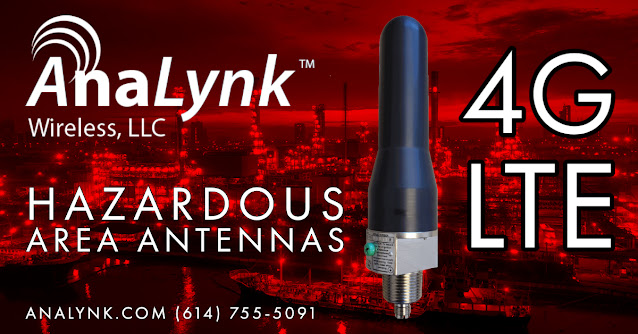As industrial operations increasingly rely on wireless connectivity, the demand for robust, high-performance networking solutions in hazardous environments has never been greater. Wi-Fi 6 (802.11ax) emerges as a transformative technology, offering enhanced speed, capacity, and efficiency tailored for complex industrial settings. Specialized manufacturers like Analynk Wireless are at the forefront, developing purpose-built Wi-Fi 6 antennas and explosion-proof enclosures explicitly designed for Class I Division 1 Groups C & D hazardous locations, ensuring safety compliance and optimal performance.
The Advantages of Wi-Fi 6 in Hazardous Industrial Environments
Enhanced Performance and Capacity
Wi-Fi 6 introduces significant improvements over its predecessors, delivering up to 40% higher data rates (with a maximum theoretical throughput of 9.6 Gbps compared to 6.9 Gbps with Wi-Fi 5) and dramatically reducing latency by up to 75% in high-density environments. Technologies like Orthogonal Frequency Division Multiple Access (OFDMA) and Multi-User Multiple Input Multiple Output (MU-MIMO) enable simultaneous data transmissions to multiple devices, significantly enhancing network efficiency. This is especially beneficial in industrial environments where numerous sensors, machines, and control systems operate concurrently, potentially involving thousands of IoT devices spread across expansive areas.
Energy Efficiency
The Target Wake Time (TWT) feature in Wi-Fi 6 schedules communication times for devices, allowing them to enter low-power states when not transmitting data. This significantly conserves energy, potentially extending battery life by up to seven times under optimal, periodic communication scenarios. It also reduces maintenance needs and operational costs in hard-to-access hazardous locations where battery replacement poses safety risks and can interrupt production.
Improved Security
Security is paramount in hazardous environments where network breaches could impact critical safety systems. Wi-Fi 6 supports WPA3, the latest security protocol, offering enhanced protection against unauthorized access and ensuring data integrity through improved encryption and authentication methods. This advanced security is critical for industries such as oil and gas, chemical processing, and pharmaceutical manufacturing, where secure and reliable communication is essential for safety and operational continuity.
Implementation Requirements for Hazardous Areas
Explosion-Proof Enclosures and Certifications
Deploying Wi-Fi 6 in hazardous locations requires specialized hardware that meets stringent safety standards. While some industrial applications may suffice with Class I Division 2 or ATEX Zone 2 ratings, truly hazardous environments with continuously present flammable gases, vapors, or dust require more robust protection. Analynk's hazardous area access point enclosures are specifically engineered for Class I Division 1 Groups C & D environments—offering the highest level of security for areas where ignitable concentrations of gases or vapors can exist under normal operating conditions.
These enclosures feature:
- Explosion-proof construction designed to safely contain internal ignitions, preventing external flame propagation.
- Specialized glands and seals maintain enclosure integrity while allowing cable entry.
- Passive heat dissipation methods are built into the enclosure to keep internal electronics within safe operational temperature limits.
- Third-party certifications such as UL (North America), ATEX (European Union), and IECEx (International) verify compliance with global safety standards.
Antenna Design and Installation Considerations
A critical aspect of implementing Wi-Fi 6 in hazardous areas is the antenna system, which must extend outside the metal enclosure to function effectively while preserving safety integrity. Specialized antennas like Analynk's HazaLynk™ series include:
- Explosion-proof construction rated for hazardous classifications.
- Wide operating temperature ranges (-40°C to +60°C) suitable for extreme industrial environments.
- The impact-resistant design ensures durability in harsh settings.
- Specialized mounting brackets and RF cable assemblies for hazardous locations.
- Frequency options cover 2.4 GHz and 5 GHz bands (Wi-Fi 6), with potential extension into the 6 GHz band for Wi-Fi 6E applications, depending on specific antenna models.
Proper installation requires careful planning regarding the following:
- Mounting locations optimize signal coverage and maintenance accessibility.
- Explosion-proof conduit systems for cable routing.
- Proper grounding and bonding to mitigate static electricity buildup.
- RF propagation characteristics in metal-rich industrial environments.
Network Interference and Reliability
Industrial settings often experience electromagnetic interference from motors, drives, and other equipment, potentially disrupting wireless signals. Wi-Fi 6 addresses this through features like BSS Coloring, which differentiates overlapping signals, reducing interference and enhancing reliability. Additionally, improved OFDMA modulation provides robust performance in noisy RF environments typical in industrial settings.
For mission-critical applications, implementations should include:
- RF site surveys before installation to identify interference sources.
- Strategic channel planning to avoid conflicts with existing wireless systems.
- Deployment of redundant access points where necessary.
- Ongoing performance monitoring and routine maintenance.
Integration with Legacy Systems
Many industrial facilities utilize legacy systems that may not immediately integrate with Wi-Fi 6. Effective integration strategies include:
- Protocol converters bridging modern Ethernet/IP communications with older industrial protocols.
- Edge gateways collecting legacy equipment data for transmission via Wi-Fi 6.
- Wireless access points supporting older Wi-Fi standards during transition phases.
- Phased implementation strategies minimizing operational disruptions.
Real-World Applications and Benefits
Wi-Fi 6 is already delivering significant benefits across hazardous industries:
- Oil and Gas: Refineries utilize explosion-proof Wi-Fi 6 networks for real-time sensor monitoring, predictive maintenance, and downtime reduction.
- Chemical Processing: Wi-Fi 6 enables mobile workers to access digital tools and remote expertise safely, maintaining intrinsic safety.
- Pharmaceutical Manufacturing: Facilities employ Wi-Fi 6 to support automated guided vehicles and continuous environmental monitoring in sterile, explosion-risk areas.
Integrating Wi-Fi 6 into hazardous industrial environments significantly enhances wireless communications' reliability, efficiency, and security. Successful implementation demands careful attention to explosion-proof enclosures, certified antenna systems, and precise installation practices. With industry leaders like Analynk developing specialized Wi-Fi 6 solutions for hazardous areas, industrial operations can confidently leverage advanced wireless technology without compromising safety. Partnering with manufacturers experienced in wireless technology and unsafe environment standards enables organizations to navigate complex implementation requirements effectively, unlocking the full potential of Wi-Fi 6 in even the most challenging industrial settings.
(614) 755-5091
https://analynk.com








